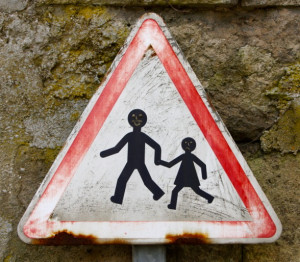 Last week, while I was in London for the London Book Fair, I had the joy of a rare evening with my lovely step-daughter over sushi in Notting Hill. We talked about a lot of things, but what I want to share here is the point at which our conversation turned toward education.
Last week, while I was in London for the London Book Fair, I had the joy of a rare evening with my lovely step-daughter over sushi in Notting Hill. We talked about a lot of things, but what I want to share here is the point at which our conversation turned toward education.
Regi teaches young people. She has always been interested in the Wheel of Creativity; but through teaching, her interest has taken on a professional slant. She sees the Wheel as a tool for young people to make life make a little more sense. And that, as you can imagine, delights me.
The next day at the book fair I met with a senior manager of a creative social network for young people. Movellas is an online community where (mostly) young people publish stories they’ve written, read each others’ stories, and give and receive feedback. Thousands of young people from different countries show up there; and from what I’ve seen, they are highly engaged.
The same theme came up in both meetings. In order to succeed in the contemporary world, young people need more than knowledge. They need understanding – about how life works – and wisdom – about how to get through it in one piece. While schools are organized and standardized to teach the former, they aren’t necessarily set up to teach the latter two.
So I was intrigued to come across an article this month in the New York Times about Manhattan’s Blue School, where students from pre-school through third grade learn differently, where openness to new ideas is a top priority. According to journalist Jenny Anderson, “Periods of reflection are built into the day for students and teachers alike, because reflection helps executive function — the ability to process information in an orderly way, focus on tasks and exhibit self-control.”
It’s not really their fault. Schools have traditionally existed to teach the three R’s: reading, writing and arithmetic. Students must pass tests to progress, and the passing of those tests now organizes the curricula. Anderson’s article quotes neuropsychiatrist and advisor to the school Daniel J. Siegel, who believes that schools should also be teaching “the three other R’s: reflection, relationships and resilience.”
Education today is intensely active; but activity is only half the equation; receptivity is the other half. According to the Wheel of Creativity, the creative process is the marriage of the two.
Personally, I wonder if school is really the best place for the other three R’s, which sound to me a lot more social than institutional. First, there’s the cost. Parents of Blue School students pay close to $32,000 a year for tuition. Second, there is the growing pressure to educate children to be able to compete in an increasingly competitive job market. And third, well maybe there are other, more inspiring ways to learn them.
A chasm has developed in learning, and understanding and wisdom have fallen in. To fill the gap, young people turn primarily to each other, occasionally to their parents, and rarely to a trusted advisor. They need to learn to think and feel and navigate life for themselves. And they need clear, inspiring and creative tools to do so. Maybe Blue School gives them a head start. Maybe Movellas gives them a place to learn from each others’ stories. Maybe the Wheel of Creativity gives them a compass they can use for life.
What are you teaching your children to prepare them for life? Share your secrets here.

Great post! Did you see John Cleese this past week on Creativity. He says we need time and space to reflect. Very much like what you are saying.
Great post Katherine.
Very very relevant article as one reflects as to how to be the best role model for these kids.
You have something concrete for them with the Wheel of Creativity.
Need to get that into schools!
Surely there is a workshop waiting for you at the Wellness Center in the kids division!
Love for a great weekend!
Deborah
Thanks for the heads up, Anita! I love his style. One of the things that struck me most in his speech was the research that revealed that sitting with discomfort is an essential part of the creative process. To quote him, “The most creative people have learned to tolerate that discomfort for much longer.” The faster we make decisions, the less creative they tend to be. Great to hear from you!
I couldn’t agree more, Deborah! My mother, a child psychiatrist, used to describe kids as sponges who were just driven to grow and learn. Naturally! We spend so much energy trying to “help them succeed” that we annihilate that in them which makes them stand out from the rest. As soon as that center is open, I’m there! Maybe even sooner!